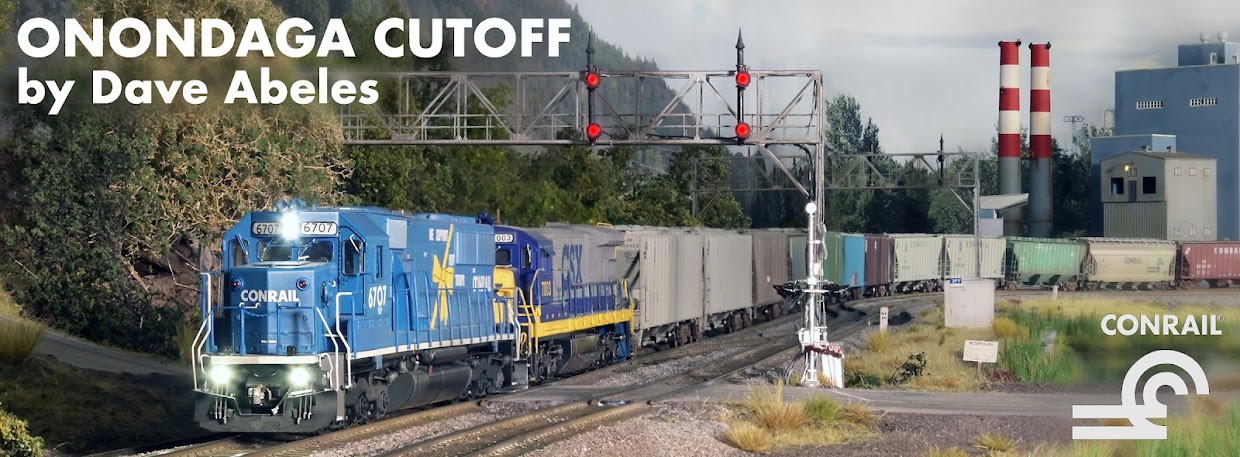Here we see a 'reefer block' - a group of insulated, refrigerated boxcars, recently upgraded with metal couplers and wheels, then weathered and finished for service. Jack and I decided it was time for another look at the operations on the OC. Jack and I got to watching some videos of Chicago Line action in the mid 1990's over the last few years, and as that brewed in the background, I was getting more frustrated with some of the irregularity of manifest lengths on the OC. I love long trains, of course, but a challenge was coming up where the first 5-6 cars in those eastbound trains were right at their limit coming up to CP282. Any sudden throttle movement or momentary short pushed things right over the cliff and we'd have a stringline derailment.
I wasn't happy with the performance and approached Jack about working the plan to try and get our train length to average a few less cars while keeping variety and not shortchanging NYSW interchange traffic. Jack mentioned we should also be including some of the western traffic - a reefer block, longer autorack block, and that autoparts block - more consistently on certain through trains.
Months passed. Jack came over last week with a new plan in mind, and we got started reblocking both the big manifest trains to fit that new idea. Everything came together and boy, both trains sure do look more like the videos now! It's awesome to see (and hear a few of) the reefers come around the corner with some lumber loads and western connection cars enroute to Selkirk and points east.
Another important goal in this exercise is to create some re-spots as part of switching: i.e., leaving some cars on spot for longer than just one cycle. I see the longer-than-24-hour placements more as a way to take some cars off the railroad, creating more manageable mainline blocks, and to also create more prototypical switching at industries with some picks and placements but also more re-spots instead of crews cleaning out a whole spur and then placing all new inbounds per the ZTS map. From a switching perspective it may end up being more work, reassembling cars on each spur between new placements and re-spots - but guys seem to like that. I see it as likely that a plant like Iroquois Paper, while huge, would not use all the kaolin from all tank cars nor need every one of the 8 boxcars picked up each day on the prototype. This system reflects that.
Coming up this week will include a second meeting on site to rebuild the blocks on spot and in Onondaga Yard - along with ON10 and SY-1 - to accommodate the new plan.
Stay tuned! The Onondaga Cutoff will be a bit more prototypical as we head into the fall!


Sounds very cool and shows that there are always opportunities to enhance operations. Enjoy the journey!
ReplyDeleteNeat to see how your evaluations of traffic flows and customer service lead to operational adjustments that ultimately lead to higher customer satisfaction.
ReplyDelete